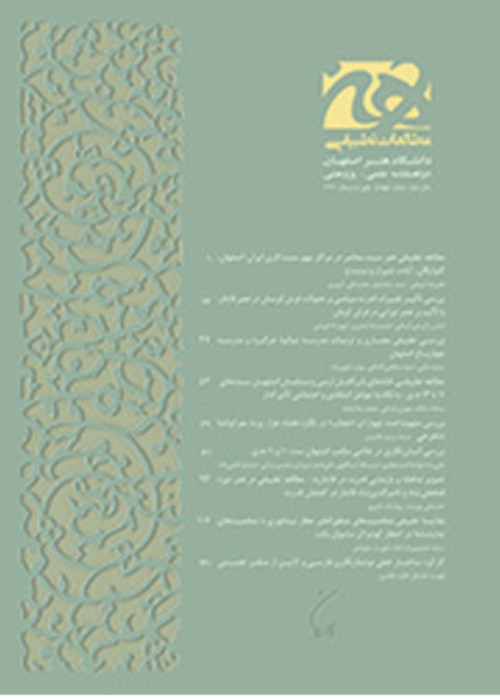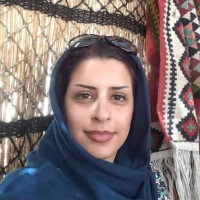Motifs Used in the Art of Sistan and Baluchestan (Case Study: Ceramics, Hand-woven, Roudouzi and Jewelry)
Author(s):
Abstract:
Sistan and Balouchestan is located in the southeast of Iran and consists of two regions; Sistan and Balouchestan. The ornamentas and decorations in these regions have various shapes and features, the most significant of them are the potteries discovered in the ancient hills, carpets, needleworks and other splendid accessories and ornaments. Various factors have led to the formation of color and form of ornaments and accessories in these regions, the most important of them have been natural, historical and environmental factors. In their ornamentation, the artists of this region have artistically and skillfully observed the visual characteristics in their work. The present researchers have tried to study the repetitive contexts and motifs in four handicraft fields as practiced. The goal of this paper is to perform an analytical, comparative and compatible study based on the information collected through literature review and field observations on the repetitive elements from ancient times to the present. The questions that are developed are as follows: What similarities could be found between the figures used in handicrafts (pottery, hand-woven items, ornamental sweeps and ornaments/accessories) from the ancient times to the present era in the two regions of Sistan and Balouchestan? What type of relationship exists between the figures and natural environment of the two regions? What kind of relationship exists between the figures and beliefs of people in the two regions? The main factor in selecting the four fields has been the proximity of the motifs and repeated elements among them.The authors have tried to select the figures which are rooted in the culture and beliefs of the people of mentioned region, and also with slight changes have the highest application for ornamentation in the four artistic fields. In the present paper, repetitive motifs in the four artistic fields are divided in four groups based on the proper variables and several motifs in each group have been analyzed based on the apparent similarities between the geometrical, animal and floral figures. Motifs of figures are lozenge, snake, fish and tree of life. Ultimately, it is determined that how some of the motifs have taken the evolution path since the ancient times to the present era to indicate the intention and purpose of the artists by considering their implementing in any of the four handicrafts.
Keywords:
Sistan , Balouchestan art , pottery , carpet , needlework , ornaments
Language:
Persian
Published:
Journal of Motaleate-e Tatbighi-e Honar, Volume:6 Issue: 11, 2016
Pages:
85 to 98
magiran.com/p1595157
دانلود و مطالعه متن این مقاله با یکی از روشهای زیر امکان پذیر است:
اشتراک شخصی
با عضویت و پرداخت آنلاین حق اشتراک یکساله به مبلغ 1,390,000ريال میتوانید 70 عنوان مطلب دانلود کنید!
اشتراک سازمانی
به کتابخانه دانشگاه یا محل کار خود پیشنهاد کنید تا اشتراک سازمانی این پایگاه را برای دسترسی نامحدود همه کاربران به متن مطالب تهیه نمایند!
توجه!
- حق عضویت دریافتی صرف حمایت از نشریات عضو و نگهداری، تکمیل و توسعه مگیران میشود.
- پرداخت حق اشتراک و دانلود مقالات اجازه بازنشر آن در سایر رسانههای چاپی و دیجیتال را به کاربر نمیدهد.
دسترسی سراسری کاربران دانشگاه پیام نور!
اعضای هیئت علمی و دانشجویان دانشگاه پیام نور در سراسر کشور، در صورت ثبت نام با ایمیل دانشگاهی، تا پایان فروردین ماه 1403 به مقالات سایت دسترسی خواهند داشت!
In order to view content subscription is required
Personal subscription
Subscribe magiran.com for 70 € euros via PayPal and download 70 articles during a year.
Organization subscription
Please contact us to subscribe your university or library for unlimited access!



